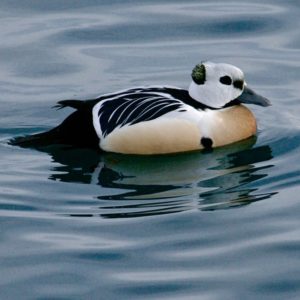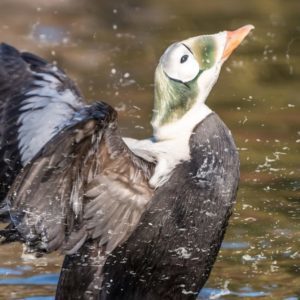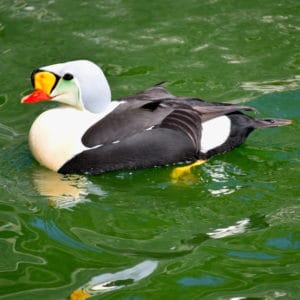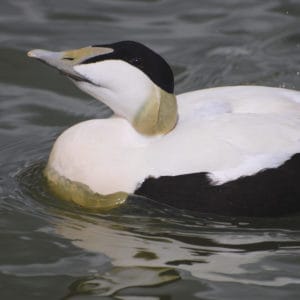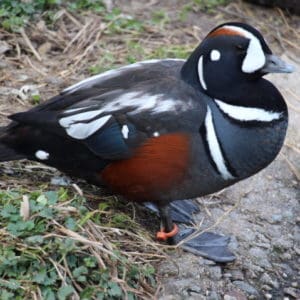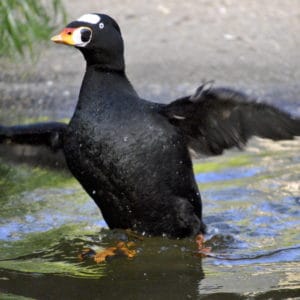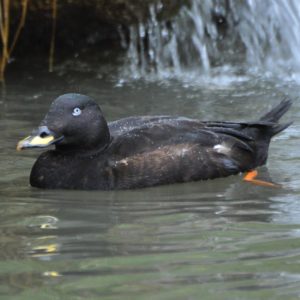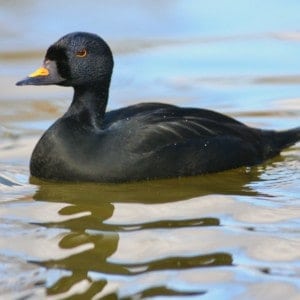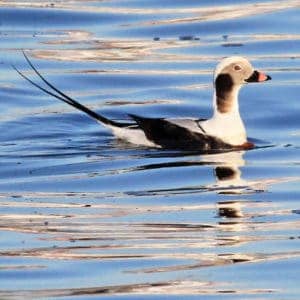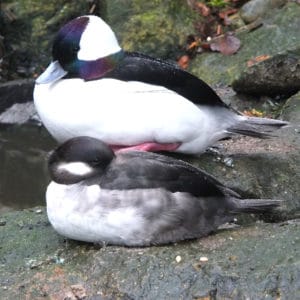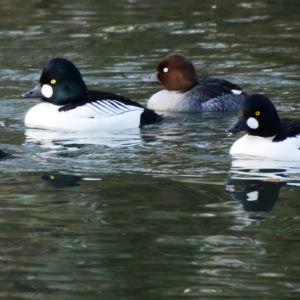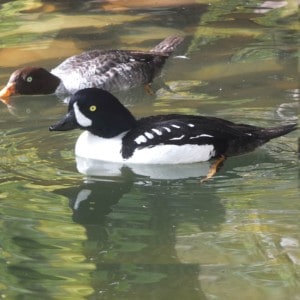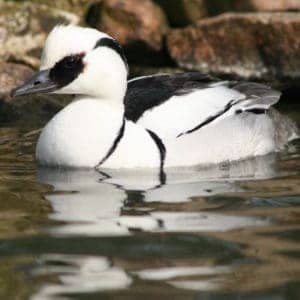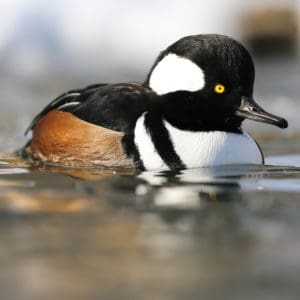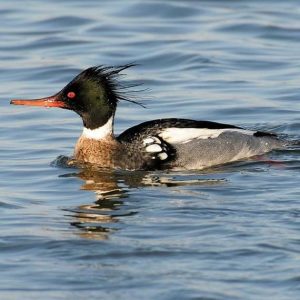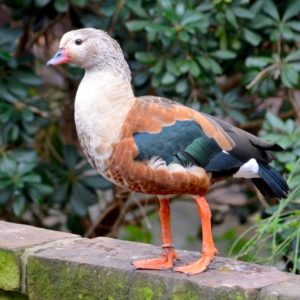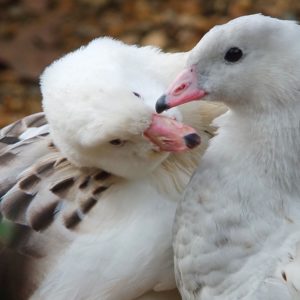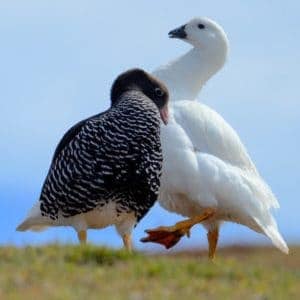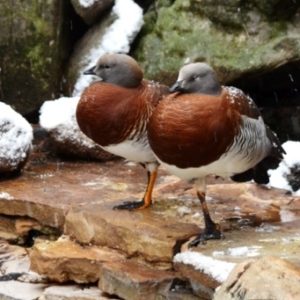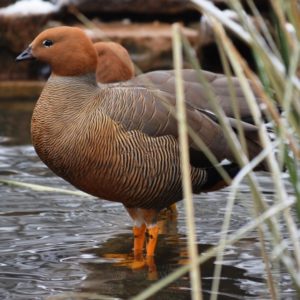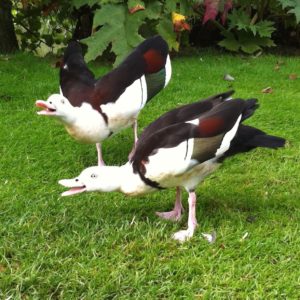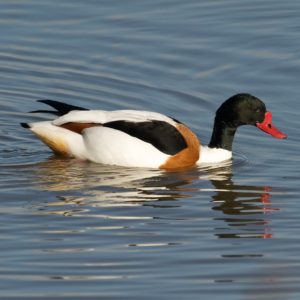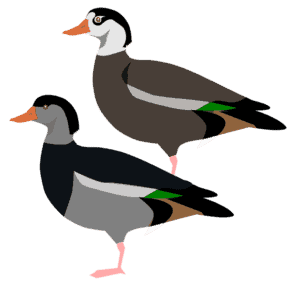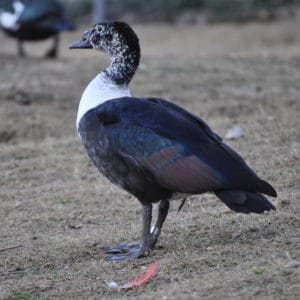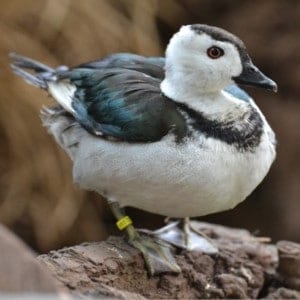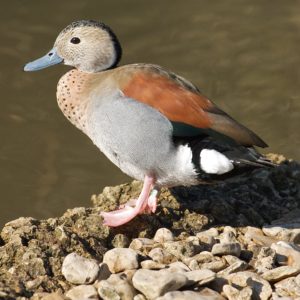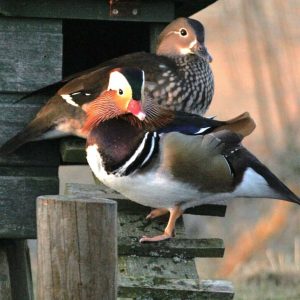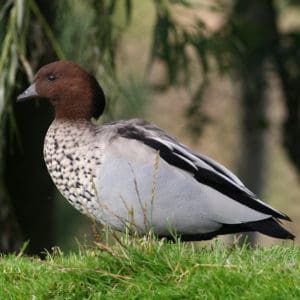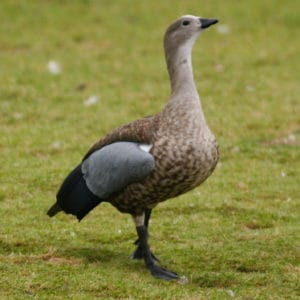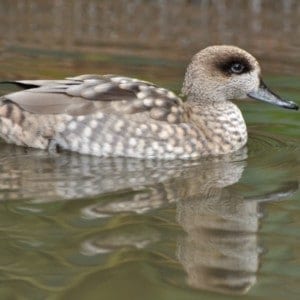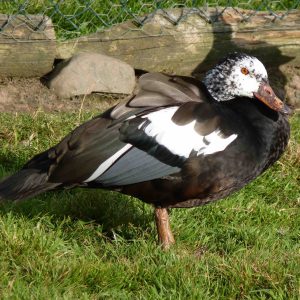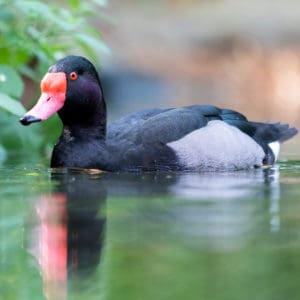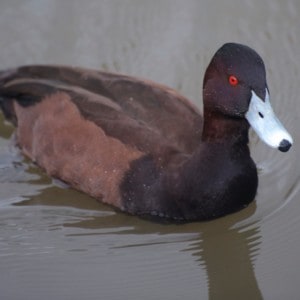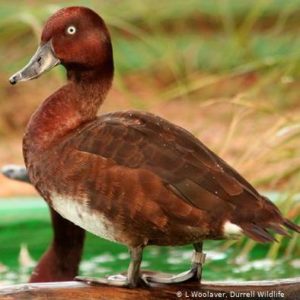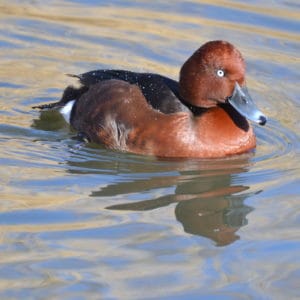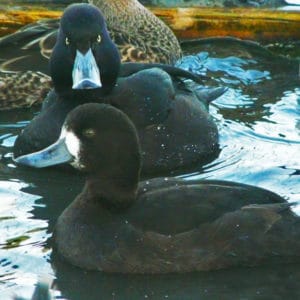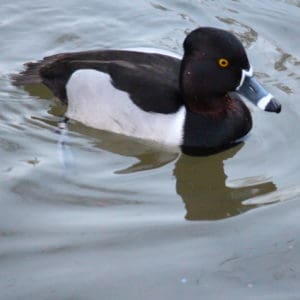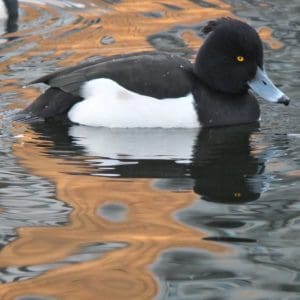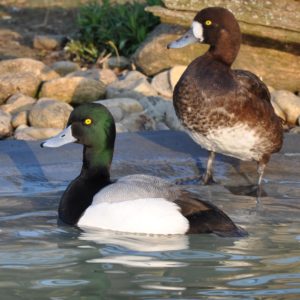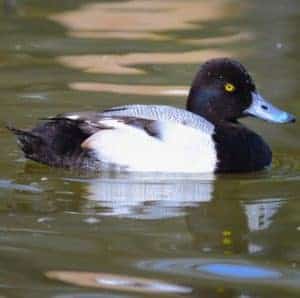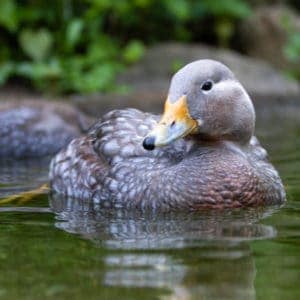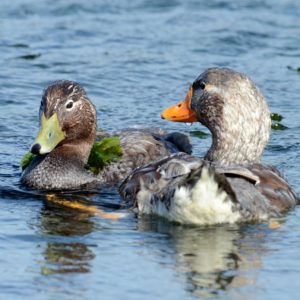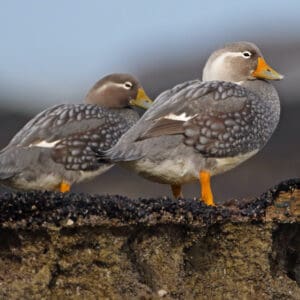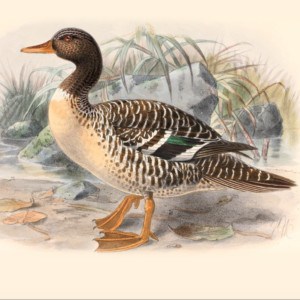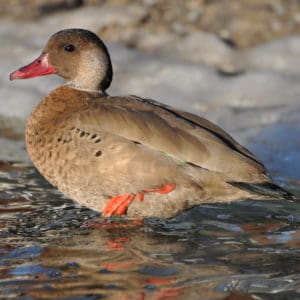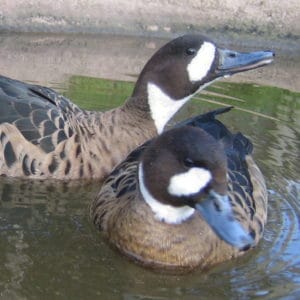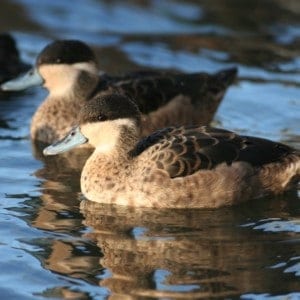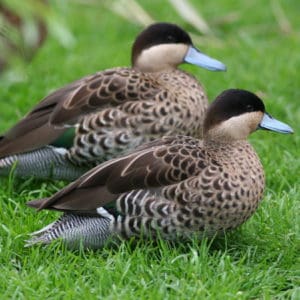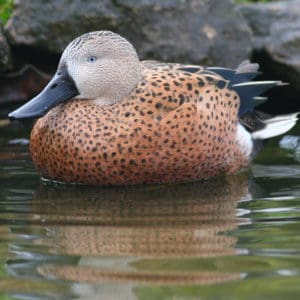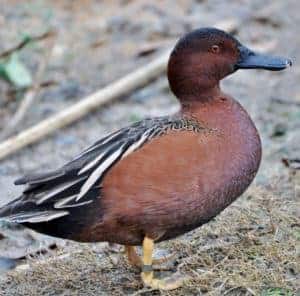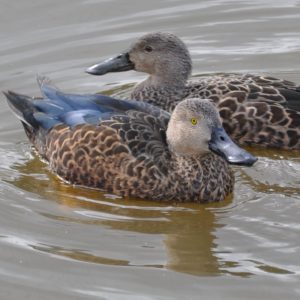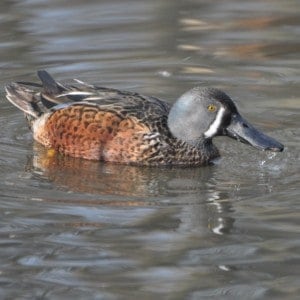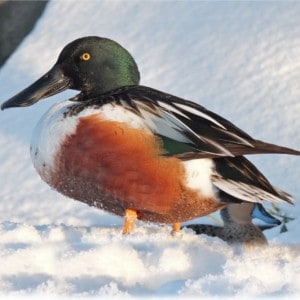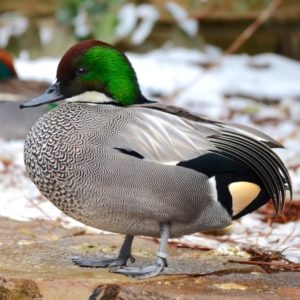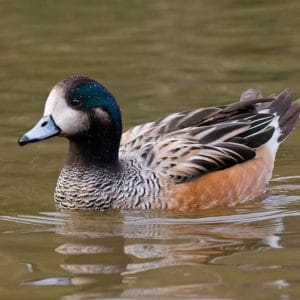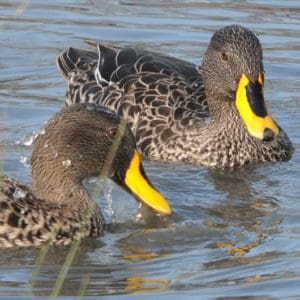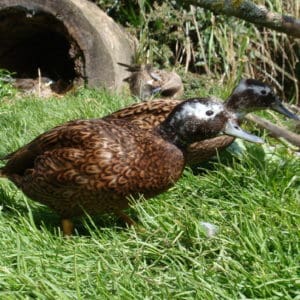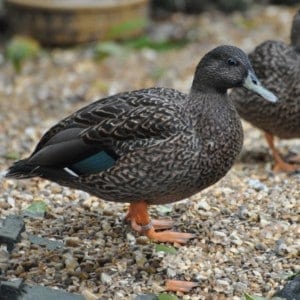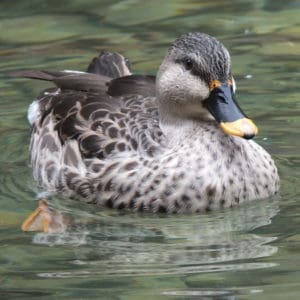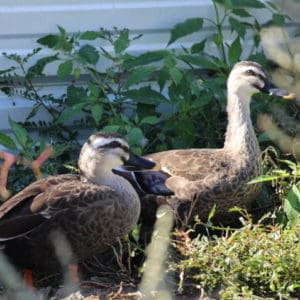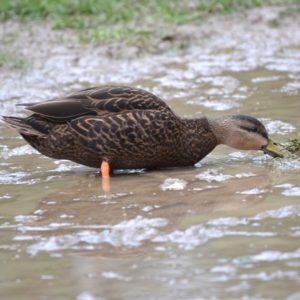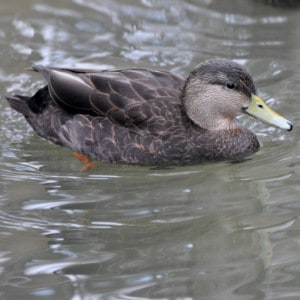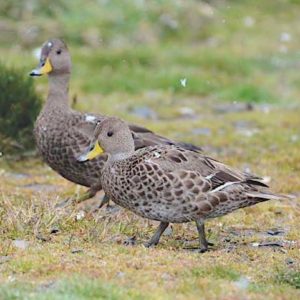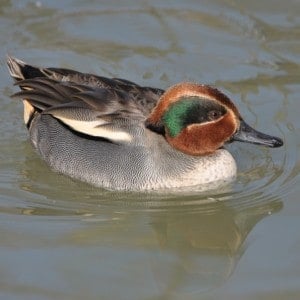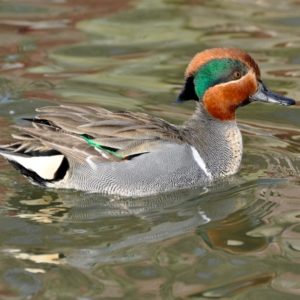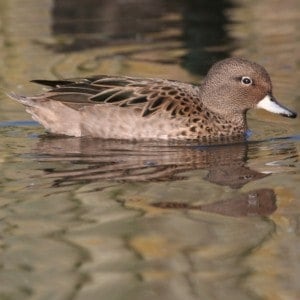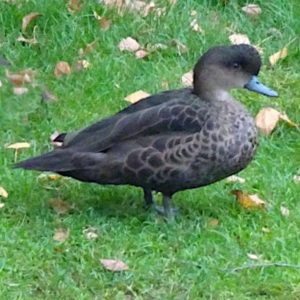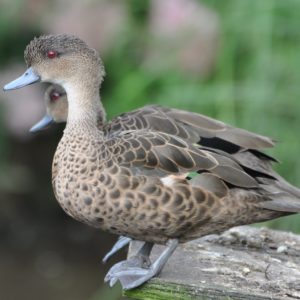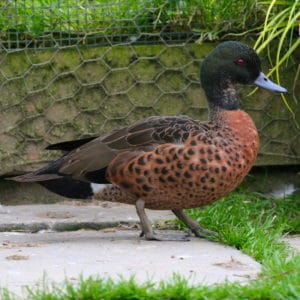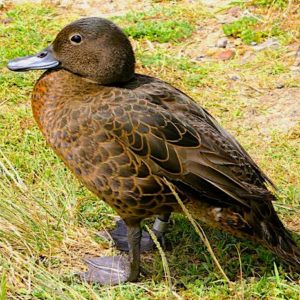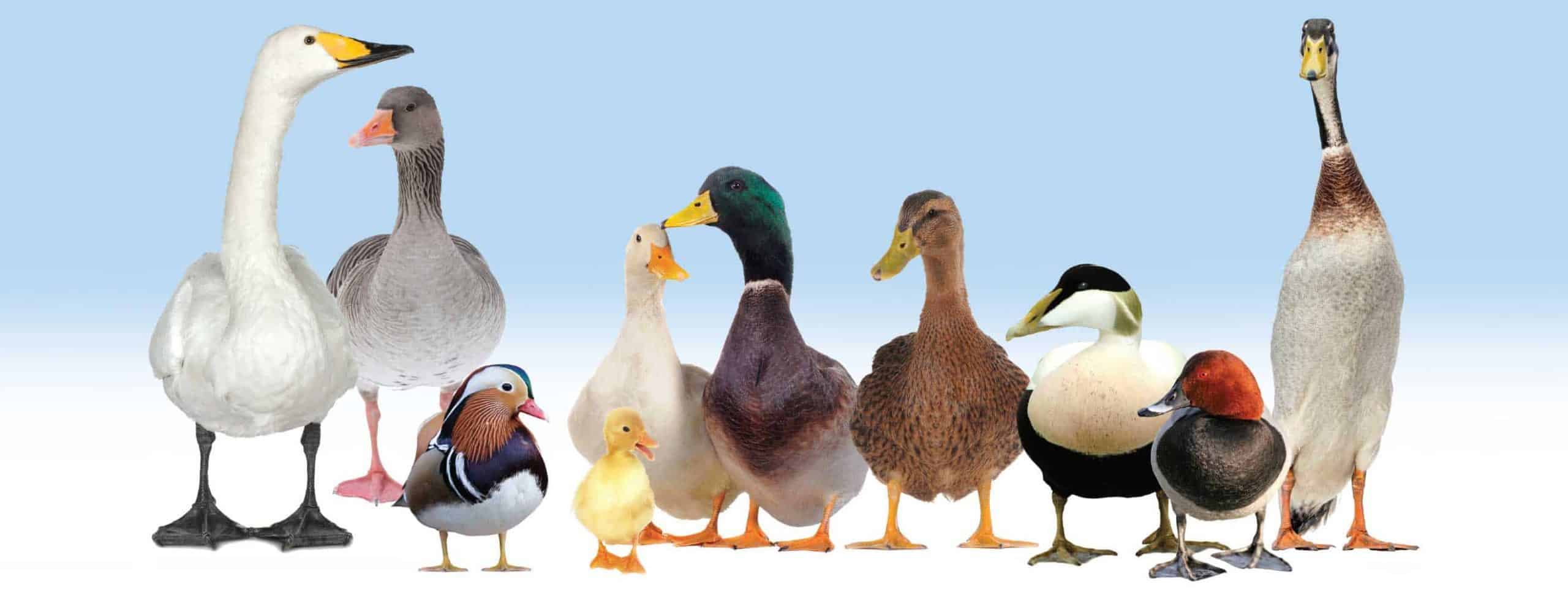Seven tribes, two of which only have one member (they are monophyletic), are included in the subfamily Anatinae — the true ducks. Although it can seem confusing that something once routinely called a goose is actually a duck, their genetic heritage has only been revealed relatively recently. Some commonly-used terms fall naturally together — they are polyphyletic. Scroll down to see the tribes.
Sea Ducks and allies
Sea ducks, the Mergini, are well adapted to marine life but the majority do nest inland. This tribe includes birds such as eiders, goldeneyes and mergansers. These ducks do need more protein than most. There are several specialised diets available. Diversity of foodstuffs provides an element of choice and can be enriching. Some birds may need different protein levels at different times of the year or when they move home. Eiders in particular are almost exclusively carnivorous.
Shelducks and Sheldgeese
Shelducks and sheldgeese, the tribe Tadornini, inhabit every continent except North America and Antartica but are mainly found in the southern hemisphere. They are not best suited to a starter’s wildfowl collection due to their territorial nature and temperament.
Shelducks are more aquatic than sheldgeese, eating vegetation and invertebrates, such as small molluscs. They form strong pair bonds and are highly territorial. Both male and female are quarrelsome. Common Shelduck can be introduced to a mixed collection but most of the other species tend to be aggressive, especially during the breeding season.
Sheldgeese are essentially vegetarian whereas shelducks are more omnivorous. They spend considerable time ashore and some species regularly perch in trees. Sheldgeese form strong pair bonds, possibly for life. Many breeders are put off keeping them as both male and female are inclined to fight. They may kill other waterfowl, and as a result, you should anticipate housing sheldgeese as separate pairs.
Perching Ducks and allies
The Cairinini or perching ducks are a varied tribe, including the popular Mandarin Duck and Wood Duck (/Carolina) through to the less common Brazilian Teal and Maned Duck (Maned Goose/Australian Wood Duck). Perching ducks tend to be more arboreal than other waterfowl.
The closely-related Mandarin and Wood Ducks are two of the most commonly kept ornamental waterfowl.
Blue Duck
Torrent Duck
Diving Ducks and allies
Diving ducks belong to the tribe Aythyini. With their legs set further back on their body, closer to the tail than most other ducks, they are ideally formed to be efficient divers but less well adapted for land.
Like most of the sea ducks and stifftails, diving ducks and feed at the bottom of water bodies, often many feet below the surface. A pond should be at least 1 metre (3′) deep to accommodate them. It is also important that it has sloped sides or ramps to enable easy access and egress. Since some diving ducks do not like to leave the water, it is necessary to place food dishes at the water’s edge or feed in the water itself.
Pochards and scaup are a group of 15 diving duck species. They are omnivorous, therefore wheat and pellets are suitable to supplement their diet. European Pochard and Tufted Duck are a good choice of starter species as they are both hardy, with a good lifespan and will breed well given the right conditions.
Dabbling Ducks and allies
The tribe Anatini includes several species of dabbling duck which are amongst the most commonly known waterfowl. Popular starter species include Northern Pintail, Gadwall, Common Shoveler and European Wigeon which all have distinctive male and female plumage, making it easy to be certain you have true pairs.
Dabbling ducks are happy with shallower and more restricted bodies of water than diving ducks. In the wild they are gregarious and happy to live in large mixed concentrations, which makes them particularly well suited to wildfowl collections.
Dabbling ducks search for their food, sifting through surface water, up-ending in the shallow reaches and often dabbling in the mud. Their diet can be supplemented with wheat and maintenance pellets, with breeder pellets are recommended in the breeding season. Grass must be plentiful for grazers such as wigeon. The availability of clean water is essential and it is a good idea to edge the pond with wood to avoid erosion of the edge by their persistent dabbling.
In migratory northern birds, pair bonds are short and seasonal but some southern dabbling ducks form stronger bonds. Generally, dabbling ducks nest on the ground.
LIST OF THE Subfamily ANATINAE
Mergini (Sea Ducks & allies)
- Steller’s Eider Polysticta stelleri
- Spectacled Eider Somateria fischeri
- King Eider Somateria spectabilis
- Common Eider Somateria mollissima
- Pacific S. m. v-nigrum
- Northern S. m. borealis
- Hudson Bay S. m. sedentaria
- Dresser’s S. m. dresseri
- Faeroes S. m. faeroeensis
- European S. m. mollissima
- Harlequin Duck Histrionicus histrionicus
- Surf Scoter Melanitta perspicillata
- Velvet Scoter Melanitta fusca
- White-winged Scoter Melanitta deglandi
- Stejneger’s Scoter Melanitta stejnegeri
- Common Scoter Melanitta nigra
- Black Scoter Melanitta americana
- Long-tailed Duck Clangula hyemalis
- Bufflehead Bucephala albeola
- Common Goldeneye Bucephala clangula
- European B. c. clangula
- American B. c. americana
- Barrow’s Goldeneye Bucephala islandica
- Smew Mergellus albellus
- Hooded Merganser Lophodytes cucullatus
- Brazilian Merganser Mergus octosetaceus
- Common Merganser Mergus merganser
- Eurasian M. m. merganser
- Asiatic M. m. orientalis
- American M. m. americanus
- Eurasian M. m. merganser
- Red-breasted Merganser Mergus serrator
- Scaly-sided Merganser Mergus squamatus
Tadornini (Shelducks and Sheldgeese)
- Egyptian Goose Alopochen aegyptiaca
- Orinoco Goose Neochen jubata
- Andean Goose Chloephaga melanoptera
- Upland Goose Chloephaga picta
- Lesser Magellan C. p. picta
- Greater Magellan C. p. leucoptera
- Lesser Magellan C. p. picta
- Kelp Goose Chloephaga hybrida
- Lesser C. h. hybrida
- Greater C. h. malvinarum
- Lesser C. h. hybrida
- Ashy-headed Goose Chloephaga poliocephala
- Ruddy-headed Goose Chloephaga rubidiceps
- Raja Shelduck Radjah radjah
- Black-backed R. r. radjah
- Red-backed R. r. rufitergum
- Black-backed R. r. radjah
- Common Shelduck Tadorna tadorna
- Ruddy Shelduck Tadorna ferruginea
- South African Shelduck Tadorna cana
- Australian Shelduck Tadorna tadornoides
- Paradise Shelduck Tadorna variegata
- Crested Shelduck Tadorna cristata (possibly extinct)
Cairinini (Perching Ducks & allies)
- Spur-winged Goose Plectropterus gambensis
- Gambian P. g. gambensis
- Black P. g. niger
- Muscovy Duck Cairina moschata
- Comb Duck Sarkidiornis sylvicola
- Knob-billed Duck Sarkidiornis melanotos
- African Pygmy Goose Nettapus auritus
- Cotton Pygmy Goose Nettapus coromandelianus
- Indian N. c. coromandelianus
- Australian N. c. albipennis
- Indian N. c. coromandelianus
- Green Pygmy Goose Nettapus pulchellus
- Ringed Teal Callonetta leucophrys
- Wood Duck Aix sponsa
- Mandarin Duck Aix galericulata
- Maned Duck Chenonetta jubata
Blue Duck Hymenolaimus malacorhynchos
Torrent Duck Merganetta armata
- Columbian M. a. colombiana
- Peruvian M. a. leucogenis
- Turner’s M. a. turneri
- Garlepp’s M. a. garleppi
- Berlepsch’s M. a. berlepschi
- Chilean M. a. armata
Aythiyini (Diving Ducks & allies)
- Hartlaub’s Duck Pteronetta hartlaubii
- Blue-winged Goose Cyanochen cyanoptera
- Marbled Duck Marmaronetta angustirostris
- White-winged Duck Asarcornis scutulata
- Red-crested Pochard Netta rufina
- Rosy-billed Pochard Netta peposaca
- Southern Pochard Netta erythrophthalma
- African N. e. brunnea
- South American N. e. erythrophthalma
- African N. e. brunnea
- Canvasback Aythya valisineria
- Redhead Aythya americana
- Common Pochard Aythya ferina
- Hardhead Aythya australis
- Madagascan Pochard Aythya innotata
- Baer’s Pochard Aythya baeri
- Ferruginous Duck Aythya nyroca
- New Zealand Scaup Aythya novaeseelandiae
- Ring-necked Duck Aythya collaris
- Tufted Duck Aythya fuligula
- Greater Scaup Aythya marila
- European A. m. marila
- Pacific A. m. nearctica
- Lesser Scaup Aythya affinis
Pink-headed Duck – now believed extinct
- Rhodonessa caryophyllacea
Anatini (Dabbling Ducks & allies)
- Flying Steamerduck Tachyeres patachonicus
- Feugian Steamerduck Tachyeres pteneres
- Falkland Steamerduck Tachyeres brachypterus
- Chubut Steamerduck Tachyeres leucocephalus
- Salvadori’s Teal Salvadorina waigiuensis
- Brazilian Teal Amazonetta brasiliensis
- Lesser A. b. brasiliensis
- Greater A. b. ipecutiri
- Crested Duck Lophonetta specularioides
- Andean L. s. alticola
- Patagonian L. s. specularioides
- Andean L. s. alticola
- Bronze-winged Duck Speculanas specularis
- Baikal Teal Sibirionetta formosa
- Garganey Spatula querquedula
- Blue-billed Teal Spatula hottentota
- Puna Teal Spatula puna
- Silver Teal Spatula versicolor
- Northern S. v. versicolor
- Southern S. v. fretensis
- Northern S. v. versicolor
- Red Shoveler Spatula platalea
- Cinnamon Teal Spatula cyanoptera
- Northern S. c. septentrionalium
- Tropical S. c. tropica
- Borrero’s S. c. borreroi
- Andean S. c. orinoma
- Argentine S. c. cyanoptera
- Blue-winged Teal Spatula discors
- Cape Shoveler Spatula smithii
- Australisian Shoveler Spatula rhynchotis
- Northern Shoveler Spatula clypeata
- Gadwall Mareca strepera
- M. s. strepera
- Coue’s M. s. couesi
- M. s. strepera
- Falcated Duck Mareca falcata
- Eurasian Wigeon Mareca penelope
- Chiloe Wigeon Mareca sibilatrix
- American Wigeon Mareca americana
- African Black Duck Anas sparsa
- West African A. s. leucostigma
- South African A. s. sparsa
- West African A. s. leucostigma
- Yellow-billed Duck Anas undulata
- Abyssinian A. u. ruppelli
- African A. u. undulata
- Abyssinian A. u. ruppelli
- Meller’s Duck Anas melleri
- Pacific Black Duck Anas superciliosa
- Australasian A. s. superciliosa
- Pelew Island A. s. pelewensis
- Laysan Duck Anas laysanensis
- Hawaiian Duck Anas wyvilliana
- Philippine Duck Anas luzonica
- Western Spot-billed Duck Anas poecilorhyncha
- Indian A. p. poecilorhyncha
- Burma A. p. haringtoni
- Eastern Spot-billed Duck Anas zonorhyncha
- Mallard Anas platyrhynchos
- Common A. p. platyrhynchos
- Greenland A. p. conboschas
- Mottled Duck Anas fulvigula
- A. f. fulvigula
- A. f. maculosa
- American Black Duck Anas rubripes
- Mexican Duck A. diazi
- Cape Teal Anas capensis
- White-cheeked Pintail Anas bahamensis
- Lesser A. b. bahamensis
- Greater A. b. rubrirostris
- Galapagos A. b. galapagensis
- Lesser A. b. bahamensis
- Red-billed Teal Anas erythrorhyncha
- Yellow-billed Pintail Anas georgica
- Chilean A. g. spinicauda
- South Georgian A. g. georgica
- Chilean A. g. spinicauda
- Eaton’s Pintail Anas eatoni
- Crozet A. e. drygalskii
- Kerguelen A. e. eatoni
- Northern Pintail Anas acuta
- Eurasian Teal Anas crecca
- Green-winged Teal Anas carolinensis
- Yellow-billed Teal Anas flavirostris
- Sharp-winged A. f. oxyptera
- Chilean A. f. flavirostris
- Andean Teal Anas andium
- Merida A. a. altipetens
- Speckled A. a. andium
- Sunda Teal Anas gibberifrons
- Andaman Teal Anas albogularis
- Grey Teal Anas gracilis
- Chestnut Teal Anas castanea
- Bernier’s Teal Anas bernier
- Brown Teal Anas chlorotis
- Auckland Teal Anas aucklandica
- Campbell Teal Anas nesiotis


